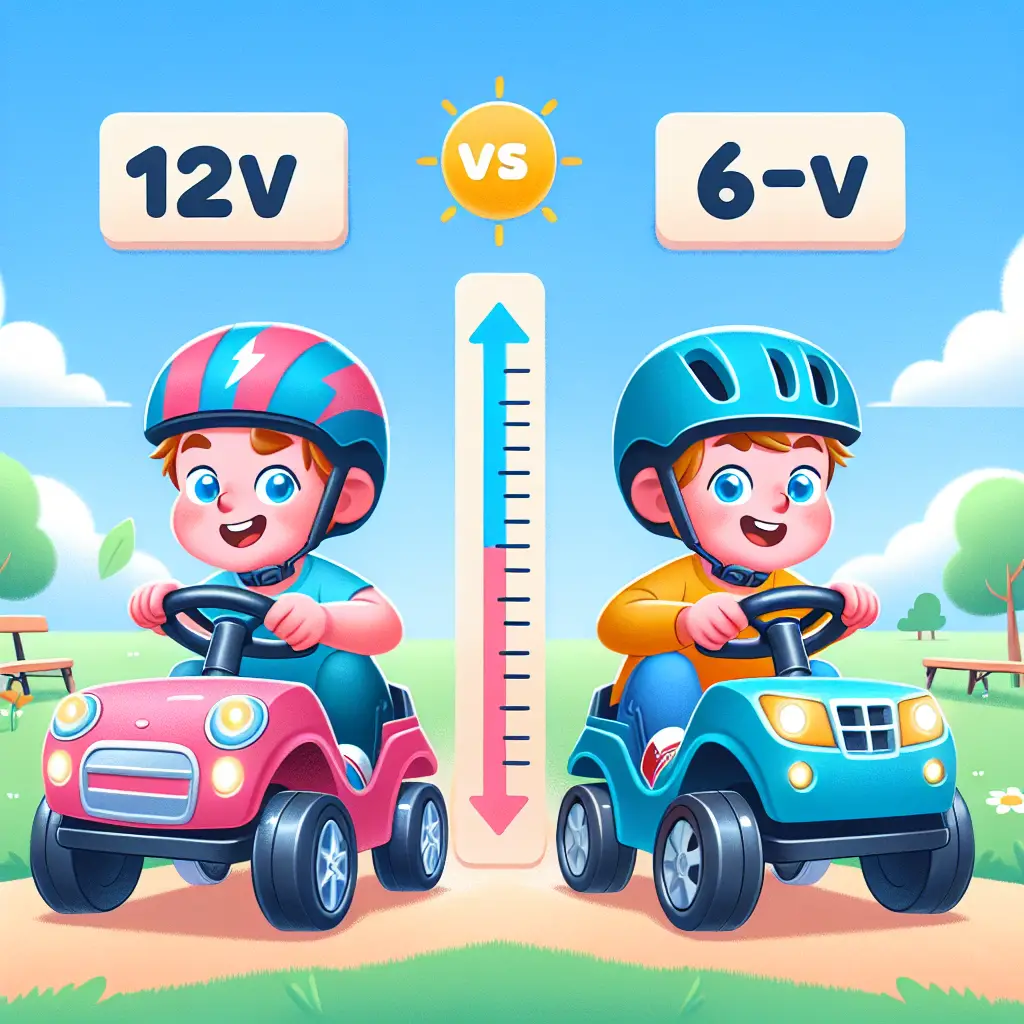Title: What’s The Difference Between 12v And 6v Ride-On Cars – You Need To Know
Are you in the market for a ride-on car for your little one and feeling stuck between choosing a 12v and a 6v model? Understanding the key differences can help you make an informed decision. In this post, I’ll delve into what separates 12v ride-on cars from their 6v counterparts, so you can pick the perfect ride for your child’s outdoor adventures.
Power and Performance: What Do Volts Really Mean?
Voltage (V) is an electrical measurement that indicates the potential of power in a ride-on car’s battery. Fundamentally, the higher the voltage, the more powerful the vehicle.
6v Ride-On Cars: Ideal for Toddlers
6v ride-on cars are designed with toddlers in mind. Their slower speeds, typically around 2-3 mph, make them ideal for the youngest drivers, aged between 1 and 3 years old. These models are perfect for indoor use or on smooth surfaces outside – like your well-manicured garden path. Fisher-Price offers an array of 6v models that are reputable for durability and safety, ensuring even the tiniest of tots can have a fun and secure driving experience.
12v Ride-On Cars: More Power for Older Kids
On the flip side, 12v ride-on cars are equipped to entertain slightly older children, usually from 3 to 8 years old. They’re capable of reaching speeds up to 5 mph, making them better suited for outdoor use in your backyard or garden. 12v models can navigate over rougher surfaces, like grass or gravel, without much fuss. A popular choice among parents is the Power Wheels Jeep Wrangler, which showcases both the power for outdoor exploration and the durability needed for rambunctious kids.
Safety and Control: Choosing the Right Speed
Navigating the difference between a leisurely cruise and a spirited adventure is crucial when it involves children. 6v cars are naturally slower, which translates to safer rides for young ones just getting the hang of steering and pedal control. On the other hand, 12v models often come with a parent remote control, allowing you to take over when necessary – a bonus feature for ensuring your child’s safety.
Battery Life and Usage Time
It’s not just about how fast they go, but how long they can sustain the fun. 6v batteries typically have shorter usage times and may need more frequent recharging compared to 12v batteries, which can offer longer play sessions. Keep in mind, the battery life will also depend on the terrain and weight of the driver. Be prepared with charging schedules to avoid mid-play disappointments.
Price Difference: What’s in Your Budget?
Budget is an essential factor in any purchase. In general, 6v ride-on cars tend to be less expensive than their 12v counterparts, reflecting their simpler construction and reduced power. However, it’s important to consider the longevity of your investment – a 12v car might be more cost-effective over time, especially if it can grow with your child’s abilities and interests.
Which Should You Choose?
When it boils down to it, the choice between a 6v and a 12v ride-on car is about finding the right balance between age, skill level, where they’ll be driving, and what you’re comfortable spending. Younger kids or those just starting might do best with a 6v model, while older children might appreciate and benefit from the additional power and freedom that a 12v ride-on car provides.
Ultimately, the best ride-on car for your child is one that matches their needs while ensuring their safety and happiness. Do your research and read customer reviews to find a vehicle that’s been tested and loved by other families.
Remember to always supervise young children when they’re using ride-on toys and make sure they are wearing appropriate safety gear – a helmet can go a long way in preventing injuries.
Happy driving to your little one, and here’s to many joyful adventures in your garden or backyard!
Conclusion
Choosing between a 6v and 12v ride-on car is not just a matter of comparison, but understanding your child’s maturity and needs. Safety should always be your top priority, and with the insights provided above, you’re now equipped to select the best ride-on car for your child.
For further reading on the development benefits of ride-on toys, check out the insightful articles from The American Academy of Pediatrics. And if you’re looking to make a purchase, be sure to compare models and check out customer feedback on trusted retail sites like Amazon.
We hope this guide has helped clear up the differences between 12v and 6v ride-on cars. If you have any questions or would like recommendations on gardening and backyard care, our blog is continuously updated with the latest tips and guides. Strap in for your next family adventure with the perfect ride-on car, and watch your child’s imagination take the wheel!

